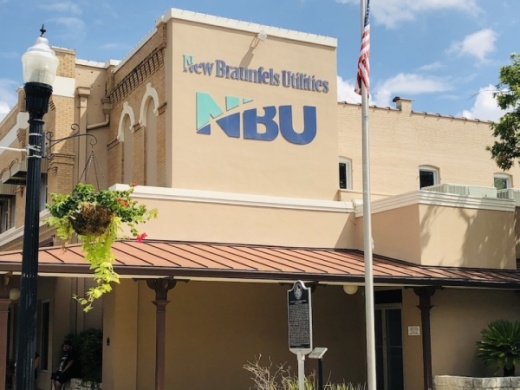“We’ve identified there’s a need to protect this property,” said Andrew Douglas of Douglas Architects, who the city hired to determine the best use for the facility.
Having outgrown their space, NBU will use proceeds of the real estate sale for their future facility off Westpointe Drive, near the Trinity Well Field and Treatment Plant. The economic impact of the buildings’ transition to private ownership was stated as being in the range of $10-20 million, potentially.
In an effort to preserve historic elements of the property, New Braunfels will limit what the buildings can be used for and how they can be altered through the use of an overlay zoning district. An overlay district applies an additional set of rules to properties within a boundary.
“Before selling it, we wanted to put protections in place so that a future owner would have requirements that protect the historical integrity of that office, the downtown area and the plaza,” NBU CEO Ian Taylor said. “What we did tonight was present to city council, and these other boards, our proposal for an overlay district which would add additional requirements beyond just the zoning requirements to protect the integrity of that building.”
There will also be restrictions on the materials that can be used on any adaptive reuse projects. Planning and Development Services Director Christopher Looney said House Bill 2439 gives Texas cities the power to “impose architectural design standards.” The NBU buildings fall under this ruling because of their location within a historic district, according to the city.
Douglas detailed how the property might be used in the future as either retail, multifamily housing, offices, hotels or combinations thereof. Douglas Architects previously created the New Braunfels Masterplan.
The NBU complex, located on the northeast corner of Main Plaza, is comprised of three connected buildings constructed at different times in the city’s history. The meeting began with an explanation of why NBU is relocating, the history of the property and how future development projects can increase downtown foot traffic and catalyze business growth.
The art deco style building was designed by architect Harvey P. Smith the year before he designed the restoration of the Governor’s Palace in San Antonio. Located on the north side of the NBU complex, it was originally a separate building that housed the first utility company serving New Braunfels, according to the presentation.
From 1963-66, Wurstfest was held in the pit where part of the south building was lost in a 1947 fire and is now the location of the south parking lot. The third building was built by NBU to bridge the other two during a previous expansion.
While the presentation was generally well-received, there was concern from several residents and board members that a proposed parking structure could visually overpower surrounding areas. Speculative designs included parking garages with as many as seven levels, with others suggesting five. Screening treatments meant to improve the aesthetics are also proposed.
It has not been decided whether the parking garage would be available to the general public or just the businesses operating the buildings. According to the presentation, hotel parking requirements are less than those of retail, multifamily or office parking, but each could be used differently depending on hours of operation and capacity. Every plan will likely require sidewalks and landscaping alterations or improvements.
Looking forward, NBU will meet with the Planning Commission Board Feb. 4, the Historic Landmark Commission Feb. 11 and the Downtown Development Board Feb. 18. A more developed plan will go before city council March 9. If approved, it will return to council March 23 for a final vote.





